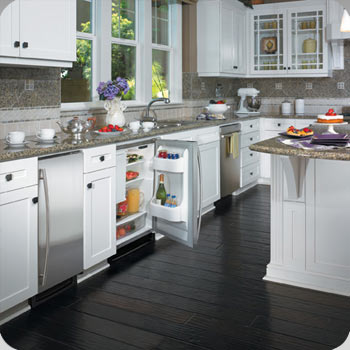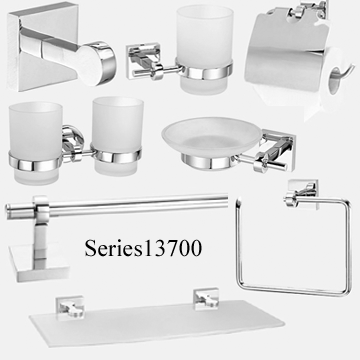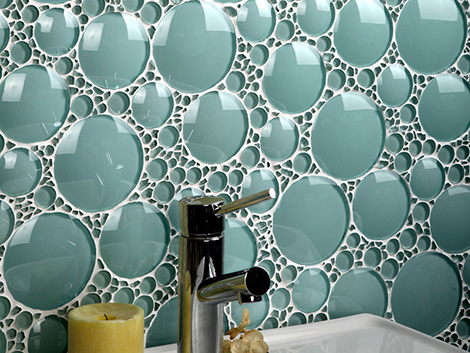Displaying is all about bringing color, pattern and personality to your home, livening up the rooms as you do so. The most successful displays of art and ornaments are where items are grouped together in a n eye-catching, thought-provoking manner.
COLLECTIONS
It can be hard to know where to begin in a bare, newly decorated room, so a good starting point might be to think of what interests you and begin collecting pictures and ornaments based on a theme.This could involve art of all types, ranging from antique prints to family photographs, and from precious silver to pretty but inexpensive ceramics, and found objects.
As well as choosing a subject matter for your collection think about the style of images or ornaments which appeal to you.If you’re a traditionalist you may prefer to collect antique prints, while those who love contemporary design may be drawn to modern media such as photographic images and abstract art.A love of pictures of people, for example, could open up a world of opportunities for collecting, from simple color snaps of your family to traditional painted portraits or contemporary photographic images.
The search for the pictures and decorative objects is part of the fun, and you can build your collection up over many years.Buy pieces that you love rather than those you believe will be an investment.If they accrue in value then that’s a bonus, but it’s more important to enjoy looking at the pieces on display in your home.
Building up a collection of items that appeal to you personally ensures you will create a unique collection that’s not only interesting to look at but which also reveals your interests and individual style.As the collection builds you will be able to rearrange the display, altering it as the season changes and your life style evolves, and so don’t be afraid to get rid of pieces you no longer like.
The location of your display plays a large part in its success.You can either accumulate objects or paintings for a particular area or, if you have a collection already, think about the best place to site it from both a practical and visual perspective. A delicate Chinese porcelain may look wonderful on a dining room dresser but needs to be kept out of reach of small children.
Places in your home might reveal themselves to be the perfect location for display; the wall above a fireplace, for example, is a natural focal point and is the ideal place to hang a large painting.Tiny nooks and crannies such as narrow shelves above doorways lend themselves to displaying quirky pieces of sculpture.
PICTURES, PHOTOGRAPHS AND PAINTINGS
If you’re buying a print, photograph or painting, you may need to get it framed.As a general rule, a picture frame should complement the picture or photograph, not distract attention from it.Large pictures often look best with a thin frame, while a small picture can be made to look more dramatic with an oversized mount and decorative frame.For a group of pictures that will be hung on the wall together, you can opt either to mix and match the frames for an eclectic look or give the group a cohesive look by choosing the same style of frame for each image.
Decide whether a picture will look best hung by itself or in a group together with similar pictures.Small pictures often look best hung in a group, while bright and busy pictures may need more space between them.Try a vertical line of three small prints, or a series of several grouped together to form a rectangular collection of images.When hanging pictures in a group, position them so they hang close to each other on the wall.This ensures the arrangement is seen as a whole, rather than as lots of smaller images.Pictures should be hung at eye level or below so you can see them properly, especially if the pictures are small.If you’re planning on covering a whole wall in pictures, find the center of the wall and work outwards in both directions from there.Use proper picture hooks.Screws for heavy mirrors and paintings may need to be fixed into the wall with wall plugs.
Staircases are ideal for displaying a series of pictures; the open expanse of wall space and the movement of people from one floor to the next means the pictures will be constantly admired.Hang them so they step upwards, with each picture slightly higher than the last, creating a sense of movement up the stairs.Passageways such as hallways and landings are a good location for a series of similarly shaped pictures.
Artwork doesn’t have to be hung directly on the wall.An open shelf provides an alternative and effective way to opportunity to include other ornaments such as vases and china that can’t be part of a wall-mounted arrangement.Placing the pictures directly on the shelf gives the display area an informal look and it can be easily altered and adapted.
When fitting a shelf, think about its height: you want to be able to see the display when you are in the room.In living rooms a low shelf fixed behind a sofa is an ideal place for a mix of pictures and ornaments, while in kitchens, where you’re more likely to be standing, a shelf at just above radiator height is a good spot for a collection of family snaps and children’s artwork.
DISPLAYING ORNAMENTS AND FOUND OBJECTS
Pretty much anything that is collectable can go on display.Salvage yards, flea markets, bric-a-brac stalls and modern design emporia are all hunting grounds for objects from antique porcelain to contemporary glassware, or vintage clothing and toys to retro and cutting-edge design classics.
Everyday items can be displayed in inventive ways just as successfully as artistic or collected treasures.Books are a constant favourite; the expression ‘books do furnish a room’ holds good, whether it applies to shelves filled with rows of antique hardbacks or second-hand paperbacks with colorful spines, a library of children’s classics or glossy coffee table books that get their nickname from where they’re displayed.Bring nature indoors: spring bulbs or found objects such as shells and fir cones all add their own textures, scents and colors to your room scheme.
When you are putting items together for display, think about color, pattern and texture, just as you did when you were decorating.Providing visual links between the object helps unify the collection, while adding some contrast brings the display to life.Placing decorative objects among more mundane ones turns a practical storage area into an eye-catching focal point.You can also use the display to bring toning or contrasting textures and color to a room; imagine a selection of colorful vases that contrast with the wall color, or a tactile mix of natural objects arranged together on a side table.In public spaces such as hallways, the occasional quirky find will catch your visitors’ eyes, while in private rooms a selection of objects that bring back memories can create a space for recollection and thought.
Tips For Displaying
- Site displays on surfaces that are visible, so they can be enjoyed by everyone in the room.
- Make sure the displays aren’t in the way.The surfaces of coffee tables, for example, are functional places for cups, magazines and remote controls, so ensure any displays leave room for the practicalities of life.
- Think about how you use the room: don’t place fragile ornaments where they can be broken.
- Consider a potential spot for a picture or ornament from where you most often sit or stand: this can influence the height and location of the display area.
- Lighting can be used very effectively to highlight your displays, simultaneously turning them into a focal point and bringing extra atmosphere to the room at night.
Image Courtesy:- http://poppytalk.blogspot.com, http://www.bbchomesandantiques.com




